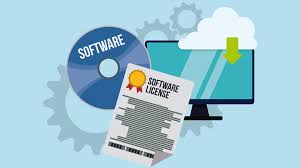Wisegeek explains software licensing as a type of contract which exists between the person of company who produces a type of software, and the end user, or person who purchases or downloads the software to use. It is created to protect the copyright of the software, and actually restricts the ways in which the end user can utilize it. Most of these restrictions consist of duplicating the software or installing it on more than one computer. Changing the software in any way or editing it’s code is also normally forbidden by the software license. According to Wikipedia, software which is copyrighted and then covered by a software license is done under several different schemes. This means that there are many different types of software licenses. In this article, we will cover a few of those types, namely GNU/GPL, MIT, and Creative Commons.
GNU/GPL General Public License
The first type of software license which we will cover here is known as the GNU GPL, or simply the GPL license. This General Public License is the most widely used type of free software license, and was originally created for the GNU Project by Richard Stallman. The GNU project is a huge project of a mass collaboration of free software which was announced on September 27, 1983. In this announcement, the goal of the project was stated to be to develop, “a sufficient body of free software ….to get along without any software that is not free.” As Wikipedia explains, Stallman set out to create one license which could be used for any project, which would make it impossible for several projects to share the same code.
This type of licensing soon became known as General Public Licensing or GPL. It is the first copyleft license which was created for use by the public.
The derived works from this type of licensing can only be distributed if it is done so under the same license terms as the original.
This allows the end user of the program to retain the rights of the free software definition while using copyleft to make sure that the freedoms of the license are protected even if the work is modified.
The terms and conditions which come with the GPL must be expressed clearly to anyone who receives a copy of the work for which a GPL is attached. If a licensee agrees to these terms and conditions, he or she may be given permission to modify the work, copy it, or distribute it or any modified version. This may be done either as a free service or for a fee, in accordance with copyleft laws. Copyleft is basically just as it sounds. It is the opposite of a copyright which restricts the recipient of software. Copyleft grants right to the recipient, and makes sure that those rights cannot be taken away from them.
MIT Software Licensing
The MIT Software Licensing gets its name from the fact that it was created at the Massachusetts Institute of Technology. It is known as a permissive free software license, which means that it permits the recipient to reuse the software if all of the copies of the licensed software come with a copy of the original terms of the MIT License. This proprietary software may incorporate software under the MIT License, but it retains its proprietary nature. The license was written for the X Window System, but has also been used in Expat, PuTTY, the Mono Development Platform class libraries, CakePHP, Ruby on Rails, Symfony, and Lua.
Wikipedia shares the following as a sample of the MIT License agreement:
Copyright (C) <year> <copyright holders>
Permission is hereby granted, free of charge, to any person obtaining a copy of this software and associated documentation files (the “Software”), to deal in the Software without restriction, including without limitation the rights to use, copy, modify, merge, publish, distribute, sub-license, and/or sell copies of the Software, and to permit persons to whom the Software is furnished to do so, subject to the following conditions:
The above copyright notice and this permission notice shall be included in all copies or substantial portions of the Software.
In a nutshell, you can use a MIT-licensed software in your own projects and resell it. You are not obliged to publicly share the source code of your product.
Creative Commons Software Licensing
The term “Creative Commons” software licensing comes from the name of a non-profit organization whose headquarters are located in Mountain View California in the United States of America. The Creative Commons organization is dedicated to expanding the range of creative works which are available for other users to build upon legally and then share. They have actually released several different copy-right licenses which are known as the Creative Commons licenses, which are all available to the public free of charge.
The purpose of the Creative Commons license is to allow the creators of the software to make it clear which rights they reserve and which ones they waive for the benefits of other users and creators. It is only one page and is written in such a way to make it simple to understand. Although these licenses do not replace a copyright, they are based on the copyright and can replace negotiations by the individuals for specific rights.
Instead of thinking of an “all rights reserved” license, it is more of a “some rights reserved.”
This is used for cases where the copyright owner is not seeking commercial gain from the software. Both the copyright owner and the recipient or user can benefit from such a license.
This article originally appeared on Monitis Blog.

